Drilling for a dream in Myanmar
NGA NAUNG MONE, Myanmar — Soon after dawn, Mr Win Myint Oo, bleary-eyed and wearing just a longyi, a traditional Burmese sarong, starts a generator and squats on a bamboo platform suspended under a 40-foot, jury-rigged derrick: just three steel poles and bamboo struts lashed together with rope.
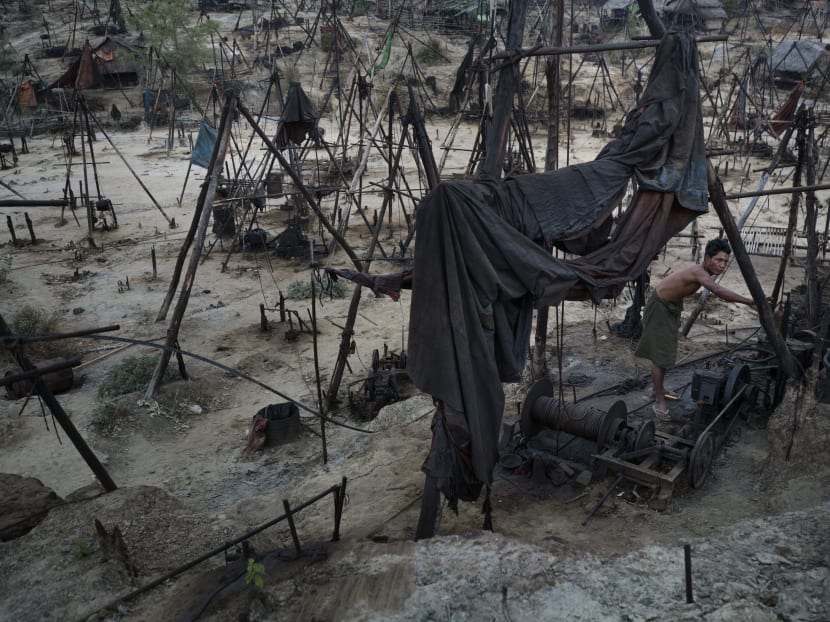
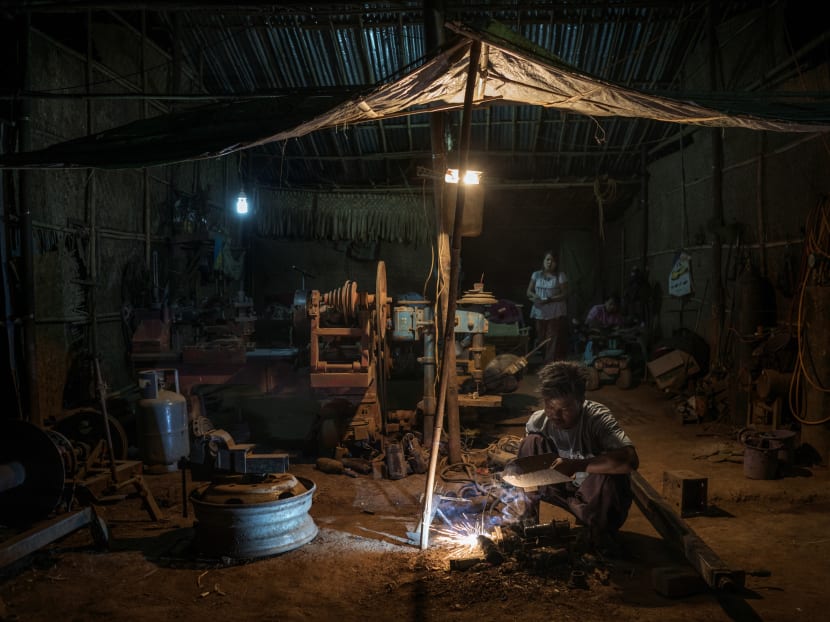
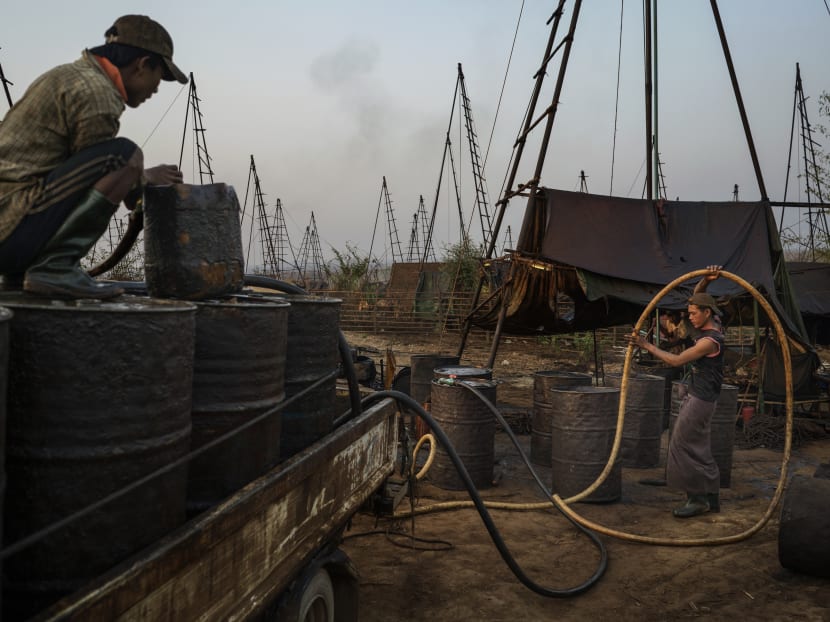
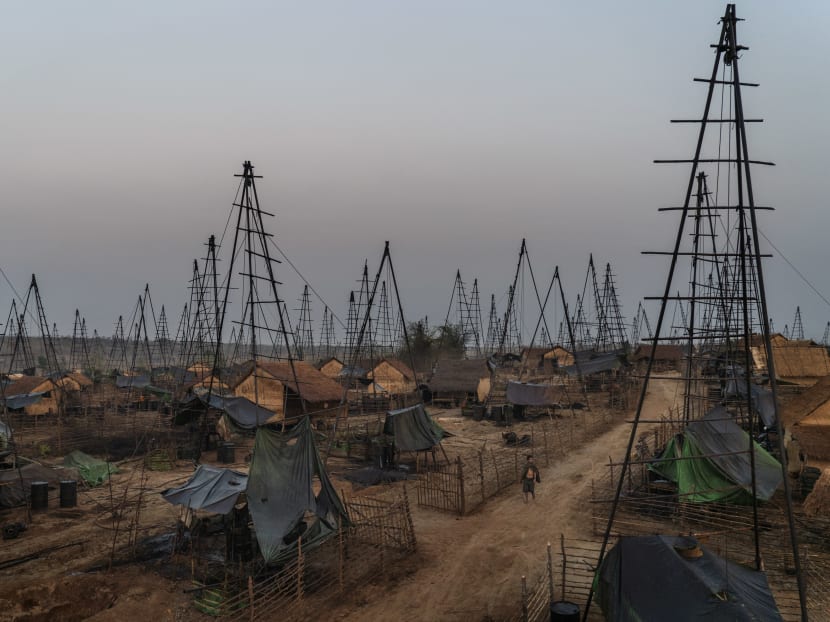
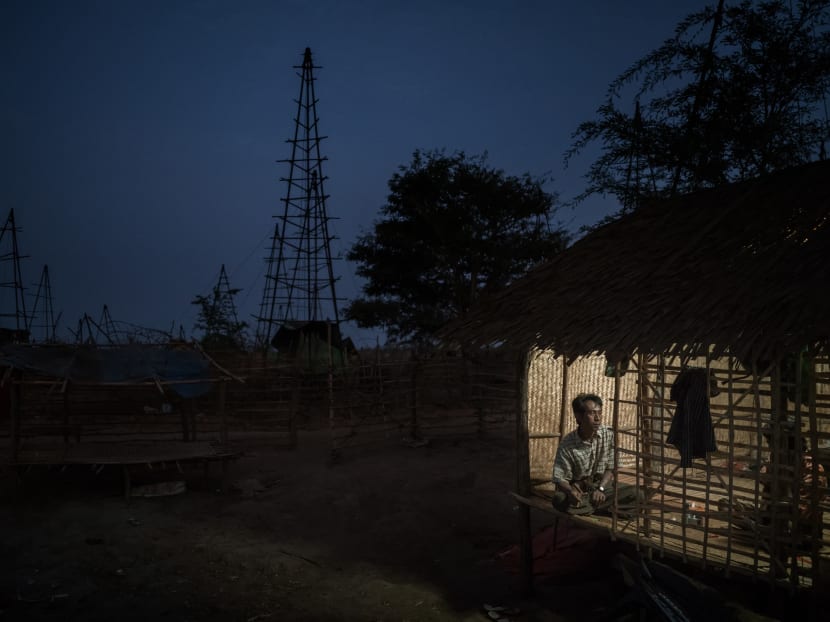
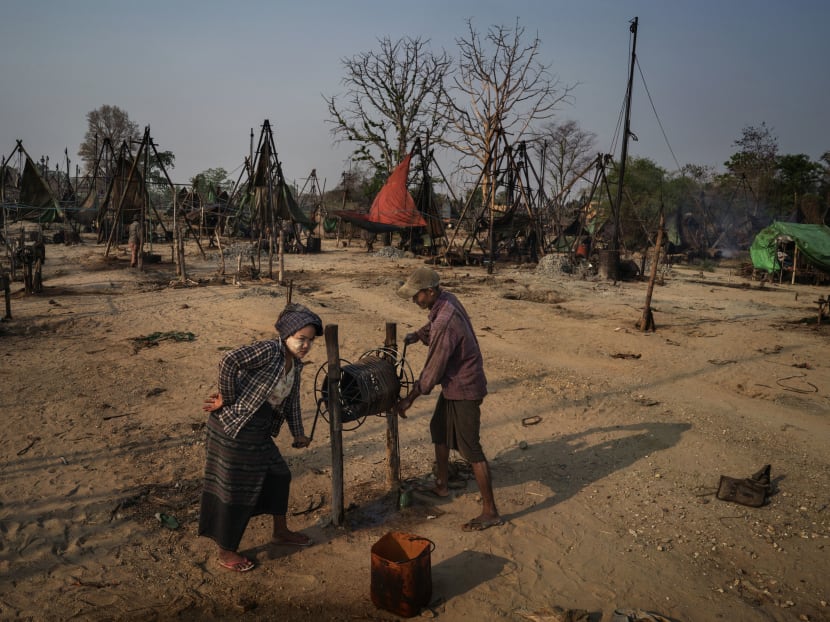
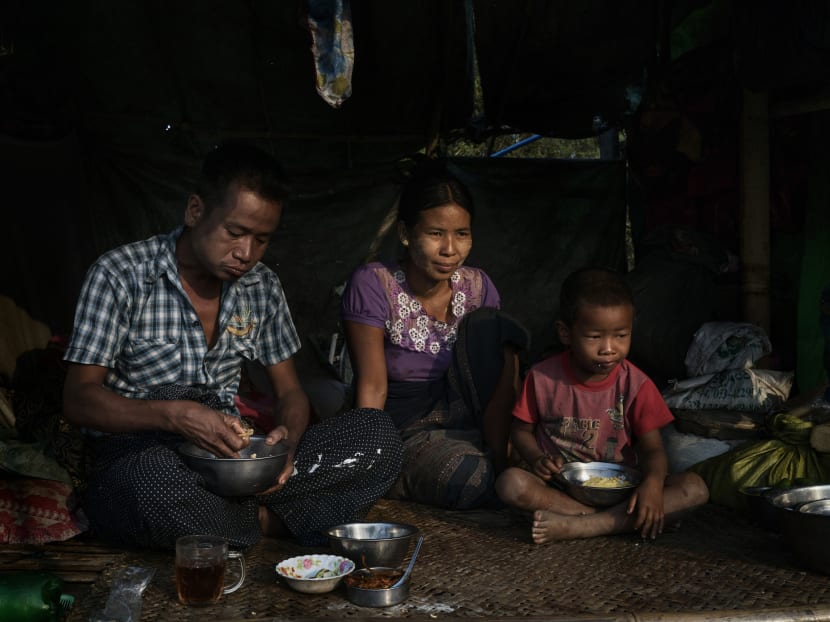
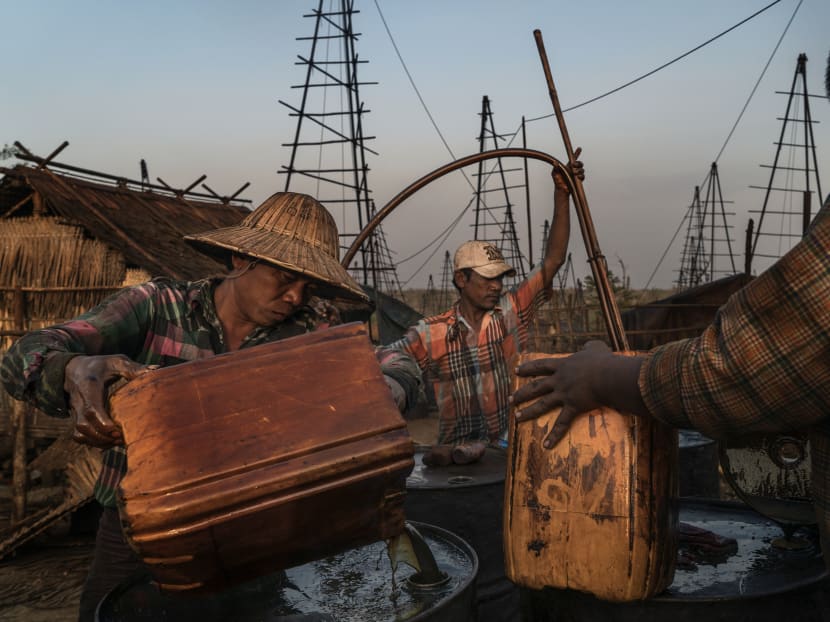
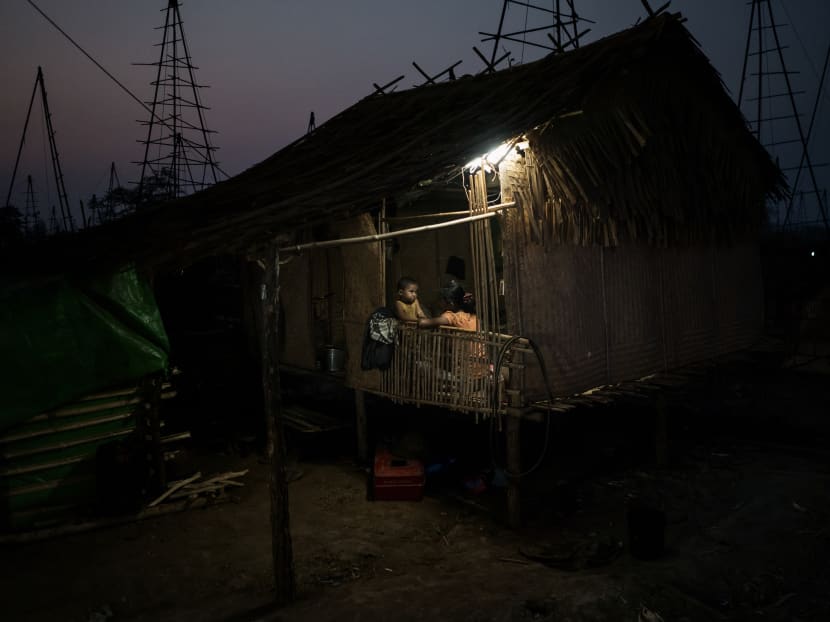
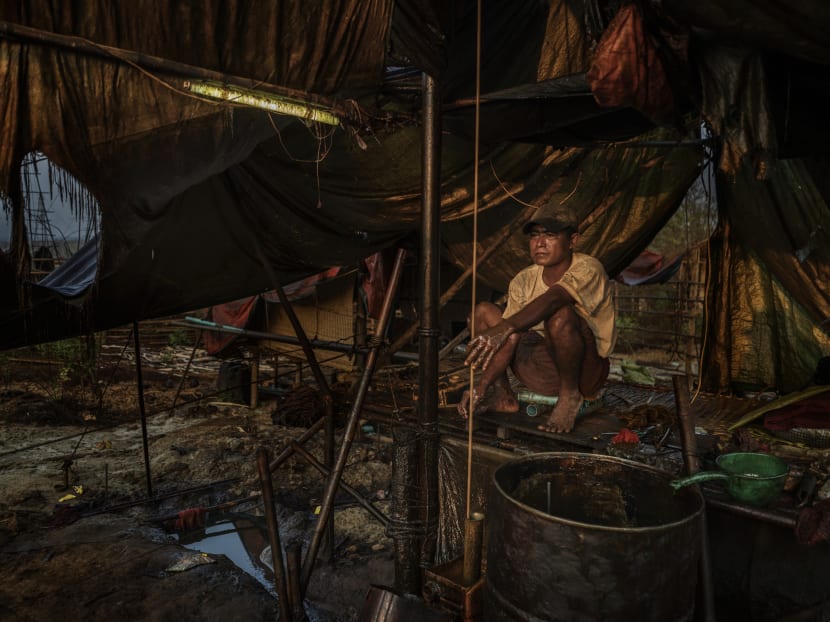
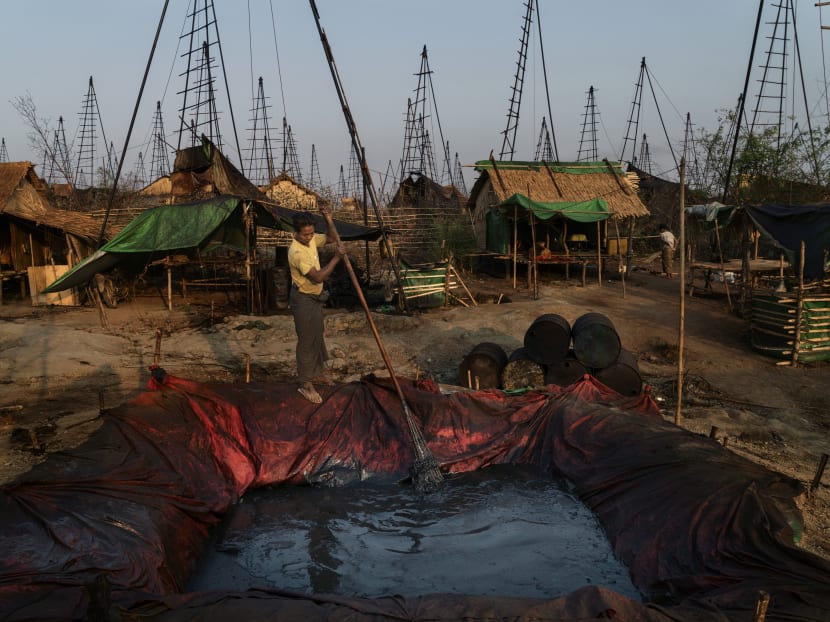
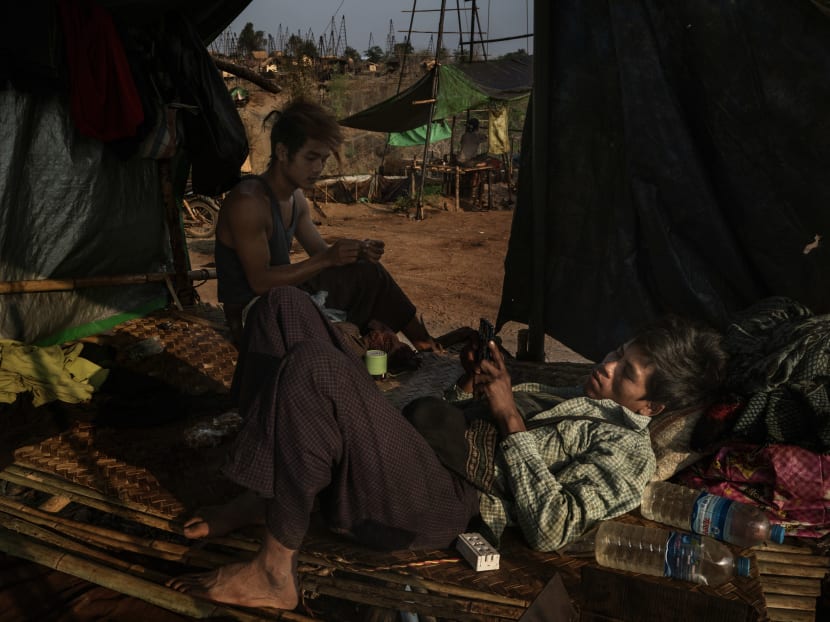
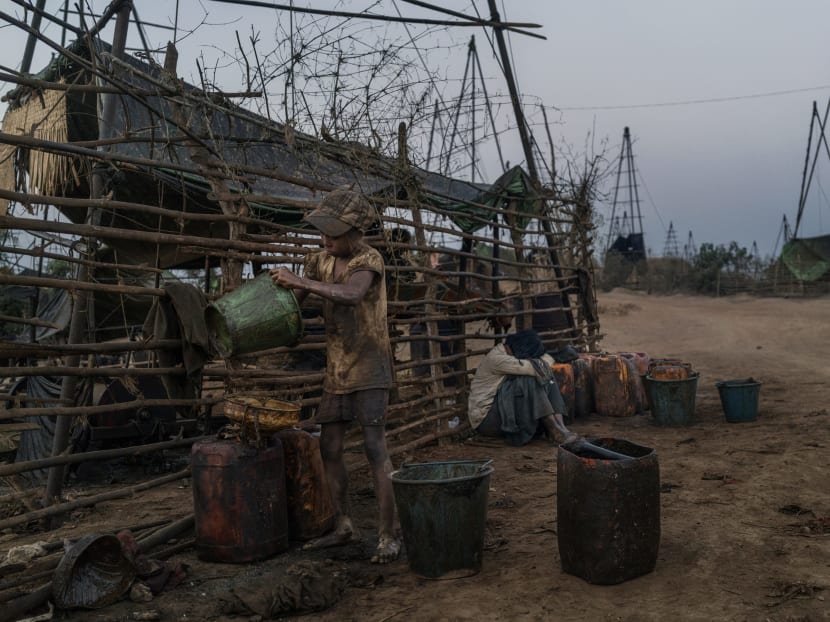
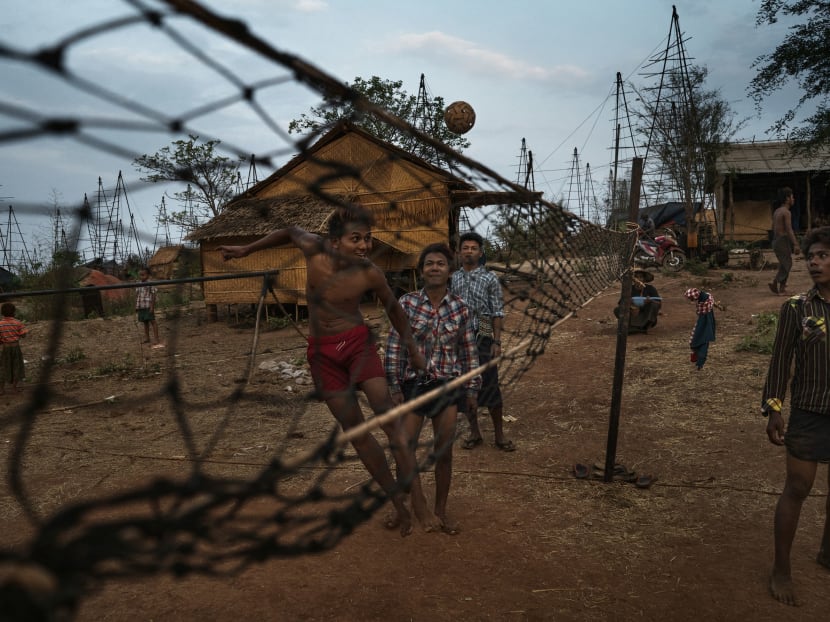
NGA NAUNG MONE, Myanmar — Soon after dawn, Mr Win Myint Oo, bleary-eyed and wearing just a longyi, a traditional Burmese sarong, starts a generator and squats on a bamboo platform suspended under a 40-foot, jury-rigged derrick: just three steel poles and bamboo struts lashed together with rope.
The generator powers a winch that lowers a blue plastic pipe 1,500 feet into the ground, then pulls it back up filled with black crude oil.
Like the other prospectors trying to draw the dregs out of Myanmar’s largest unregulated oil field, Mr Win Myint Oo, 24, came with a dream of striking oil and making it rich.
“I hope I have the chance to be a big boss,” he said. “If I get lucky I want to open a car showroom. I love cars. Maybe I will become Formula 1 champion, one day.”
The reality is otherwise. Competing with thousands of other wildcat prospectors here, he will be lucky to collect a barrel a day, earning a little over US$50 (S$69.19).
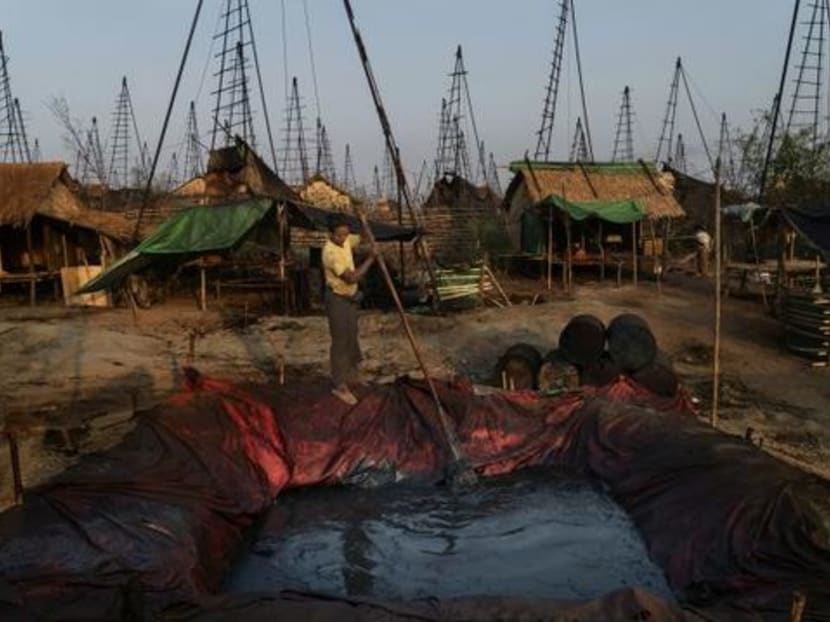
A wildcatter stirs oil in a tarpaulin-lined pit, in the Nga Naung Mone oil field near Minhla, Myanmar, March 29, 2017. Thousands of wildcatters have come here to live and work in Myanmar’s largest unregulated oil field, with dreams of striking it rich. Photo: The New York Times
That is good money in rural Myanmar, where most farmers earn a subsistence income. But most drillers here in Nga Naung Mone saved for years or borrowed money from family members to come up with the setup costs, about US$7,300 to buy a plot of land from a farmer, acquire some basic equipment and hire a driller.
“If they don’t find oil, they lose the money,” said Mr Khin Maung Myint, a supervisor at the Sein Tagon Oil Company, which buys the oil from the drillers and ships it by truck to a refinery. “We don’t have the technology to see where the oil is, which is the problem. So people just go and dig.”
“If you dig and get lucky,” he said, “it is fate.”
Moreover, since prospectors first struck oil here about five years ago, the field has become overcrowded, and its reserves have been depleted.
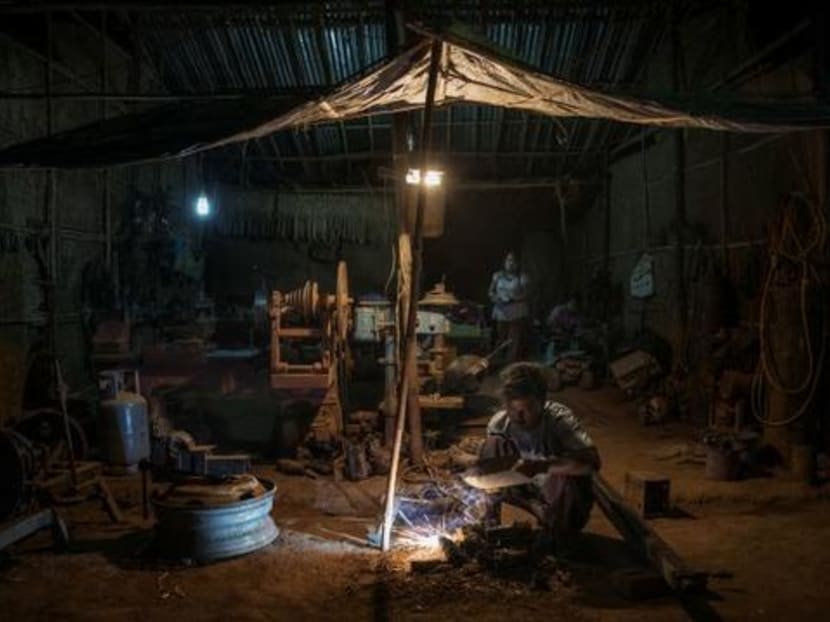
A welder works in a metal shop that repairs winches and generators used for oil extraction, next to the Nga Naung Mone oil field near Minhla, Myanmar, March 30, 2017. Thousands of wildcatters have come here to live and work in Myanmar’s largest unregulated oil field, with dreams of striking it rich. Photo: The New York Times
Nga Naung Mone is one of three oil fields near the town of Minhla, in south central Myanmar, and the largest by far. The others, Dagine and Da Hat Pin, are much smaller and less developed.
Now several thousand people live and work here, and the oil fields are chockablock with derricks, many as close as 10 feet apart.
Mr Win Ko, 44, who has been at Nga Naung Mone for four years and owns over 50 wells, says that a few years ago he was able to pump oil 24 hours a day, extracting up to 15 barrels per well. Today, he said, that average is less than half a barrel per well a day.
The work starts early to beat the tropical heat, and soon after sunrise, the hum of generators fills the air.
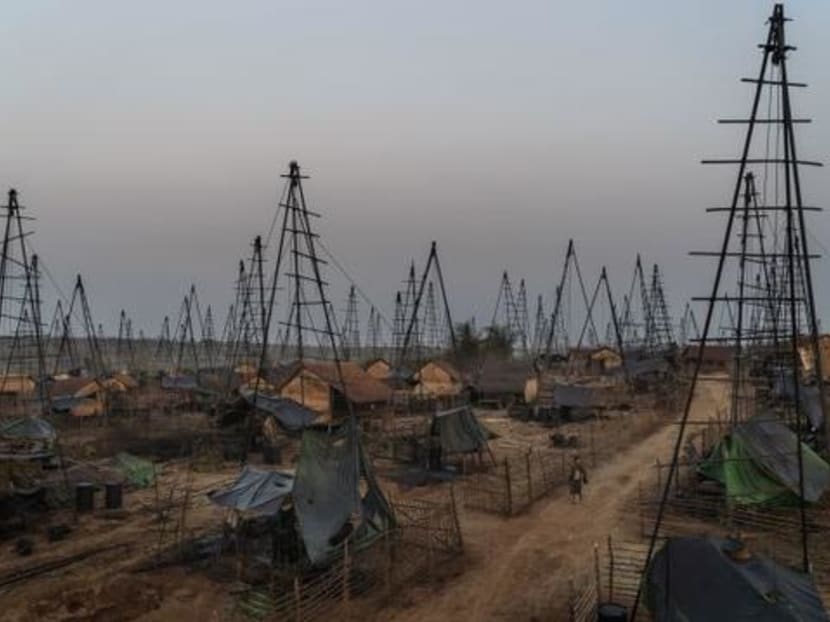
A wildcatter stirs oil in a tarpaulin-lined pit, in the Nga Naung Mone oil field near Minhla, Myanmar, March 29, 2017. Thousands of wildcatters have come here to live and work in Myanmar’s largest unregulated oil field, with dreams of striking it rich. Photo: The New York Times
Most of the drillers store their day’s collection in barrels. Those who own several derricks use tarpaulin-lined pits, which hold more oil.
As the sun starts to dip below the horizon, silhouetting the derricks, about 100 pickup trucks, tractors pulling trailers and even ox-drawn carts weave their way through the maze of wells carrying old dented oil drums to the Sein Tagon collection stations.
In the dry season, when temperatures climb as high as 110 Fahrenheit, most wildcatters retreat to their huts around 9am to shelter from the sun and rest until late afternoon, when it is cool enough to work again.
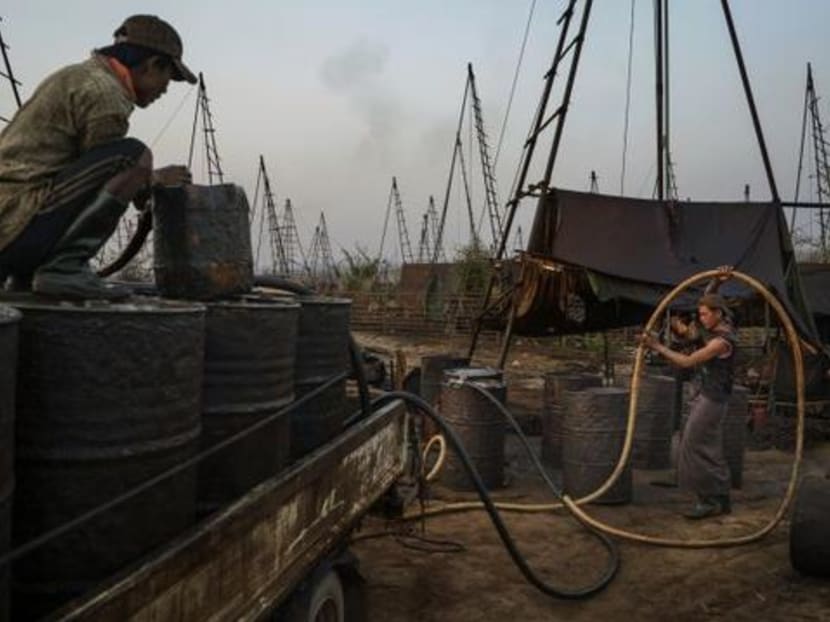
Workers pump oil from barrels onto a truck for delivery to the collection point, where it will be taken to a refinery, at the Nga Naung Mone oil field near Minhla, Myanmar, March 26, 2017. Thousands of wildcatters have come here to live and work in Myanmar’s largest unregulated oil field, with dreams of striking it rich. Photo:The New York Times
The workday ends around 6.30pm. Some drillers bathe and start to prepare dinner outside their huts, while others play chinlone, a Burmese game similar to volleyball.
About 3,000 people live in Nga Naung Mone. Most have one or two wells and live in bamboo huts next to them, some with their wives and children.
A small village has sprung up beside the oil field to support them.
In the evening, workers and their families stroll along the road, browsing the shops in bamboo shacks that sell products and drilling supplies. There are a handful of restaurants and tea shops, some showing live soccer matches.
Most wildcatters work seven days a week and take time off only during important Buddhist festivals. Children who are old enough attend school in nearby villages.
Women and young girls work as well, using rags to soak up spilled oil, then wringing them into a bucket. A full bucket sells for about US$4.50.
Most drillers figure Nga Naung Mone has at most two years left before it is pumped dry. Then they will pack up their derricks and their dreams and move on.
Mr Win Ko is already looking into another oil field, in Myaing, a few hundred miles north, where he already owns six wells.
THE NEW YORK TIMES






